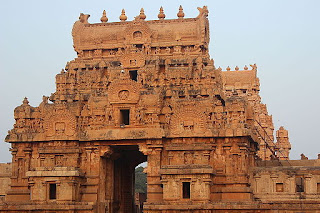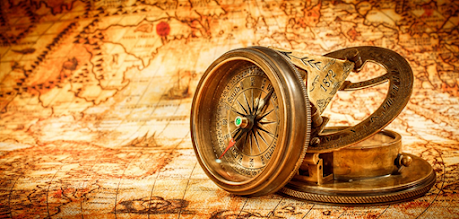The Chola Kingdom
India has always been the land of great Empires, diverse cultures and different civilizations. The Mauryan, Gupta and the Mughal Empires have always been the most deeply studied civilizations but many other great ones have not seen as much limelight. The Cholas are one of them.
Origin
The tripartite struggle between the the kingdoms of Pala, Rashtrakuta and Pratihara for the capital city of Kanuj lead to regional instability. In a similar manner around the same time, the Pallavas, Pandyas and the Cholas also fought for the assertion of dominance in southern India. In this battle the Cholas emerged victorious.
The Cholas came into existence in about 300-600 BCE along the Kaveri River Delta. From the beginning the Cholas were dependent on the sea for wealth. In their infancy they were merely a vassal kingdom in servitude of the Pallavas. The Pallavas due to prolonged conflicts with the Pandyas were left significantly weaker in the coming years. Taking advantage of this opportunity King Vijayalaya took the city of Thanjavur from their Pallavi overlords and marked the beginning of their Imperial Era.
The Golden Age
After their conquest of Thanjavur, for the next 150 years the dynasty experienced the proliferation of Tamil arts, culture and language.
The Cholas were known for their masterful architecture in temple building. They continued the traditions of the Pallavas who were also known for the same. They also contributed significantly to the Dravidian temple design. They built number of Shiva temples along the banks of the river Kaveri.
These temples augmented the cultural presence of the Cholas. Religious scholars affiliated themselves with these divine hotspots and revived Hindu literature from its nadir during the Kalabhras. It was also during this time that the grammarian Buddhamitra wrote a text on Tamil grammar called Virasoliyam.
Governance and Administration
The hallmarks of large kingdoms were territorial expansions, but the long lived ones are known for their supremacy in governance.
There were various reforms during the Imperial Era. In problem with the status quo (viz. fiduciary system) was that the regional lords had high upkeep. Moreover the common folk were loyal to the regional lords rather than the central system as they had no interaction with them. The Cholas adopted a centralized governance approach. They maintained extensive records of administrative reports, legal disputes, internal reviews of misconduct and corruption. Regular large scale surveys and centralized revenue collection ensured fairness in taxation. Elected officials were appointed to maintain such records who were subjected to regular auditing. These reforms made the local feudatories redundant thus consolidating power into the hands of the center.
Expansion
Rajaraja Chola I and his successor Rajendra Chola I are considered to be the most powerful Emperors of the Chola Dynasty. They were the ones who began territorial expansion beyond the Kaveri Delta. They expanded their territory as north as the Krishna-Godavari basin to Sri Lanka and the Maldives in the south.
One of King Rajendra's most notable achievements was conquering the Ganges in 1023 CE. He was crowned the title of “Gangaikonda Chola” which literally translates to conqueror of the Ganges. To mark this victory he built a new capital city titled Ganikaikonda Cholapuram. This remained the capital city of the Cholas for the next 250 years.
The Indian subcontinent lies at the center of an oceanic trade superhighway known as the maritime Silk Road. For thousands of years ancient powers moved significant cargo along these routes. This route connected Europe, Middle East and the Indian subcontinent, to the Malay Archipelago, Australia and the Tang Dynasty in China.
Control over the maritime Silk Road would ensure military and administrative dominance along with access to the economic benefits of providing trading, docking and other services to regular travelers of the maritime Silk Road.
Shri Vijaya a powerful thalassocracy based in the Malay Archipelago was actively interfering with trade and damaging chola interests by putting up naval blockades and forcing travelers to use their ports and docks.
Foreign Expansion
The trade guilds were strong independent entities that had strong influence over the day to day affairs of the ports and docks. They often furnished their own standing armies and had immense wealth and political influence. When Shri Vijaya saw more success in docking at the Malay Archipelago, Indian trade guilds suffered losses.
Moreover there was an immediate cause for the declaration of war; the Shri Vijayan conflict with the Chola ally : The Cambodia-Angkor Dynasty. The Chola Navy was on the forefront of naval technology at their time. Rajaraja had imported Chinese and Arab shipbuilders to design the Chola navy featuring better hulls, more accurate compasses and flamethrowing weapons mounted at the bow of the ship similar to the byzantine fleets. With such naval supremacy the Cholas quickly overthrew Shri Vijaya. The empire disintegrated into smaller kingdoms who accepted Cholas suzerainty.
The Cholas adopted a pseudo colonial approach and established permanent military garrisons in Shri Vijaya and Angkor. King Rajendra also married Raja Sangramas daughter. Since then the Malay Royalty has claimed and continues to claim Chola heritage.
The Decline
After the coming of the 12th century, the further kings who were named after King Rajaraja and King Rajendra ascended the throne, were not as capable as the initial holders of their names. Rajendra Chola III lost control of Vengi to the Western Chalukya and Gangavadi to the Hoysala Empire. These setbacks despite being temporary was the beginning of the end. Eventually the Cholas lost significant power following the defeat by Maravarman Sundara Pandiyan II in 1215–16. Subsequently they also lost control of Sri Lanka with the rise of Sinhala power. A feudatory by the name of Kopperunchinga I, even held Rajaraja Chola III as hostage for sometime. The Pandyan resurgence in the region saw the end of the Cholas with Rajendra III as its last Emperor. Even though the Cholas are forgotten by the bulk of humanity, their legacy survives in the blood and culture of their descendents in India and in Southeast Asia.
Credit and References:
Vivek Patil
SY Computer Science (Team Historic Wednesday)
https://www.britannica.com/topic/Chola-dynasty
Nagapattinam to Suvarnadwipa : Reflections on the Chola Naval Expeditions to Southeast Asia Foreword / by Shashi Tharoor -- Message / by M.V. Subbiah -- Preface / by K. Kesavapany -- Introduction / by Hermann Kulke
Image references:
https://upload.wikimedia.org/wikipedia/commons/6/68/Chola_map.png
NOTE :-
This blog is meant for Educational Purpose only .We do not own any Copyrights related to images and information , all the rights goes to their respective owners . The soul purpose of this blog is to Educate, Inspire, Empower and to create awareness in the viewers. The usage is non-commercial(Not For Profit) and we do not make any money from it.
FOLLOW US ON:-
INSTAGRAM :
https://bit.ly/coep_blogs_insta
LINKEDIN:
https://bit.ly/coep_blogs_linkedIn
YOUTUBE:-
https://bit.ly/Coep_blogs_YouTube




Comments
Post a Comment